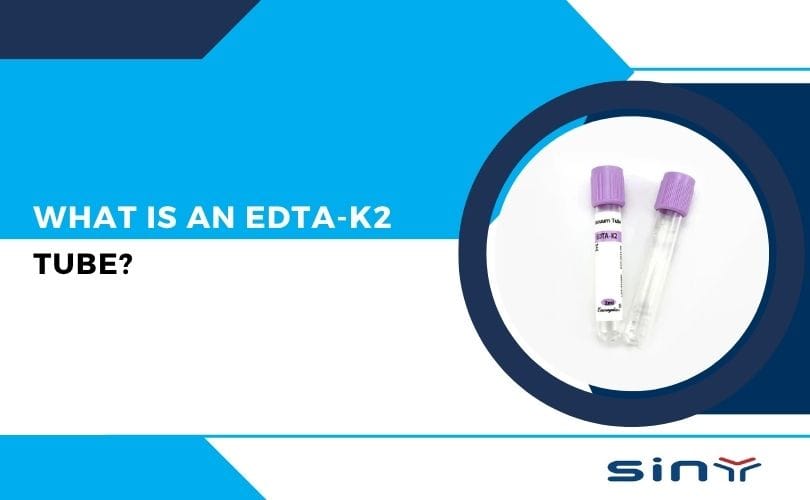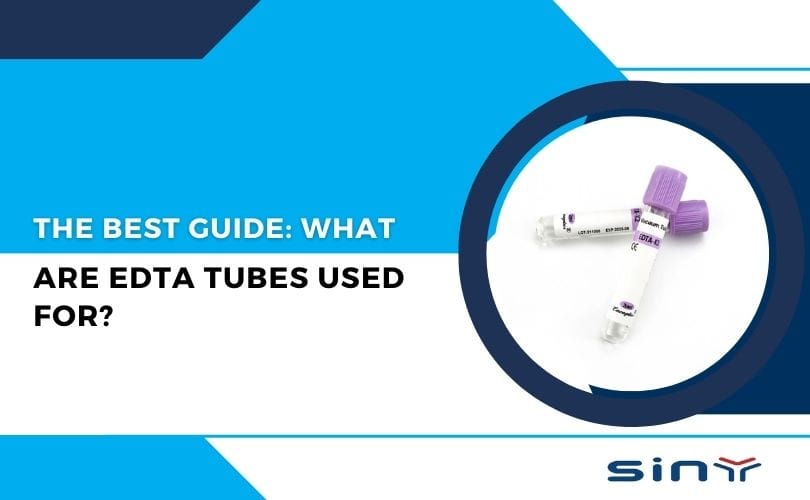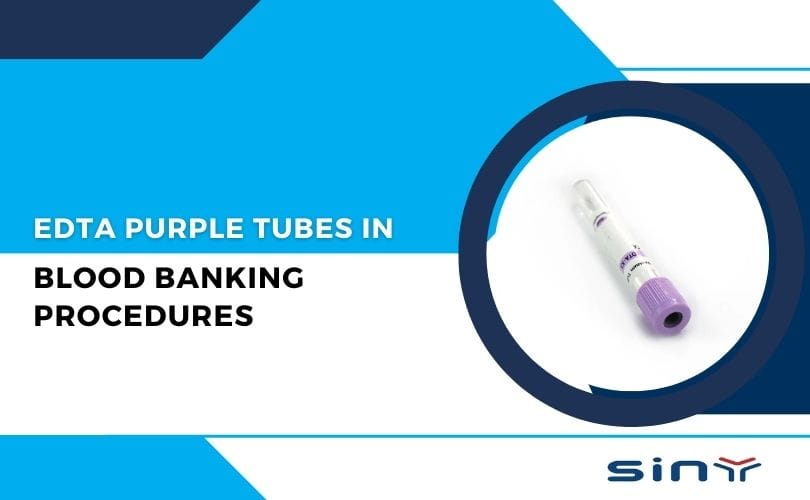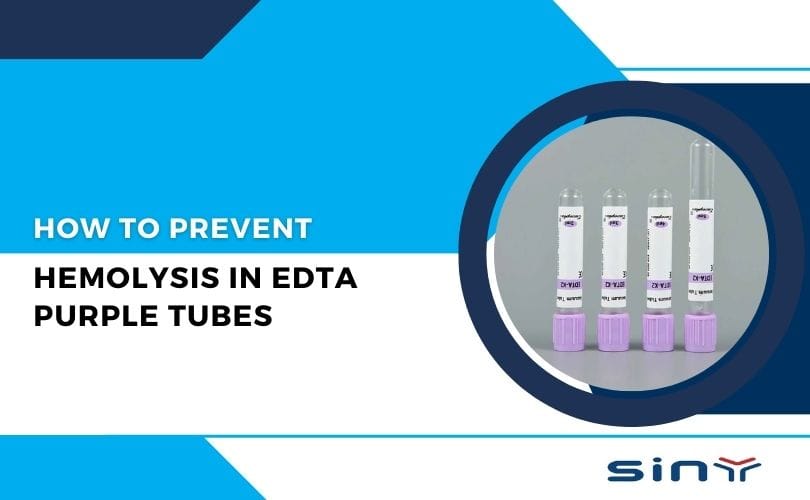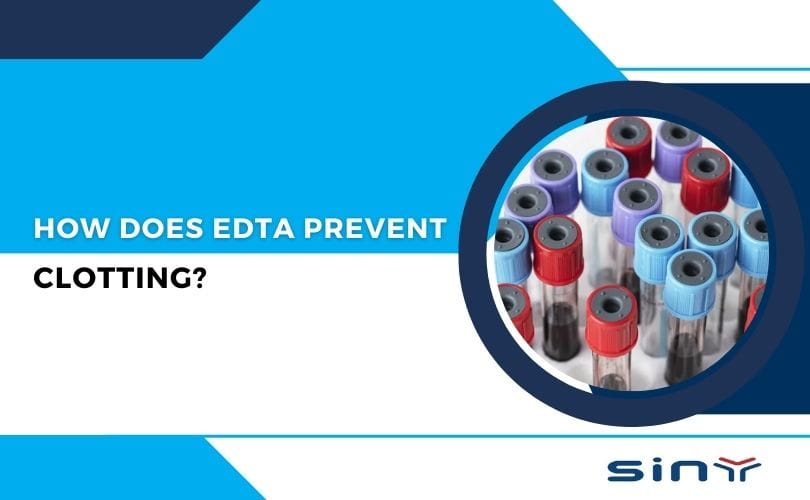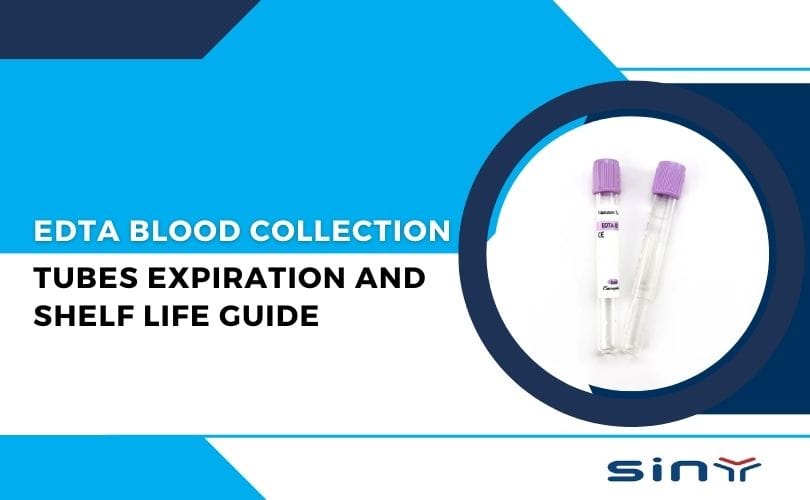In modern clinical diagnostics, the quality of a blood sample directly determines the accuracy of test results. Especially in hematology, preventing coagulation after blood collection is essential. The EDTA-K2 tube, as one of the most widely used anticoagulation tubes, is favored for its high efficiency and excellent preservation of blood cell morphology. It has become a standard consumable in laboratory practice.
This comprehensive guide will explore everything you need to know about EDTA-K2 tubes, including their composition, clinical applications, best practices, and how they compare to other anticoagulant tubes.
Definition and Composition of the EDTA-K2 Tube
EDTA-K2 stands for dipotassium ethylenediaminetetraacetic acid, a chemical anticoagulant commonly used in vitro. Its mechanism of action involves chelating calcium ions in the blood, which are essential for the coagulation cascade, thereby effectively preventing clotting.
In manufacturing, EDTA-K2 is typically applied to the inner wall of the tube in dry powder or spray-dried form. This avoids sample dilution or osmotic interference that can occur with liquid anticoagulants, making EDTA-K2 particularly suitable for precise cellular analysis.
Why Calcium Matters in Coagulation
Calcium ions are crucial cofactors in multiple coagulation pathways, including prothrombin activation and fibrin formation. EDTA-K2 binds these calcium ions into stable complexes, thus interrupting the coagulation process. This mechanism is both rapid and gentle, with minimal impact on the structure of red and white blood cells or platelets.
For more details on EDTA tubes, visit our EDTA Tubes for Blood Collection page.
Clinical Applications of EDTA-K2 Tubes
EDTA-K2 tubes are primarily used for:
- Complete Blood Count (CBC): Routine hematological testing of red blood cells, white blood cells, hemoglobin, hematocrit, and platelets.
- HbA1c Measurement: Assessing average blood glucose levels over the past 2–3 months for diabetes monitoring.
- Blood Typing and Crossmatch: Preserving red blood cell integrity for immunohematological analysis.
- Molecular Biology: Including DNA extraction and PCR, where the preservation of nucleic acid integrity is critical.
Thanks to its stable anticoagulation and minimal cellular interference, the EDTA-K2 tube is the first choice for most hematological assays.
Explore our K2 EDTA Blood Collection Tubes for high-quality lab solutions.
Comparison with Other Anticoagulant Tubes
Among various anticoagulant tubes, EDTA-K2 stands out for its stability and low interference.
| Tube Type | Primary Use | Advantages | Disadvantages |
|---|---|---|---|
| EDTA-K2 | Hematology (CBC, HbA1c) | Preserves cell morphology, dry-coated | Not for coagulation tests |
| EDTA-K3 | General hematology | Liquid form, easy mixing | May cause cell swelling |
| Heparin | Biochemistry, electrolytes | Prevents clotting, plasma separation | Affects WBC morphology |
| Sodium Citrate | Coagulation tests (PT, APTT) | Partial calcium binding | Not for hematology |
Why Choose EDTA-K2 Over Other Tubes?
- Better for CBC tests due to minimal cell distortion.
- Dry anticoagulant prevents dilution errors.
- Ideal for HbA1c testing with stable results.
For a full range of EDTA tubes, check our EDTA Tube Category.
Recommended Use and Handling of EDTA-K2 Tubes
To ensure accurate and reproducible test results, follow these best practices:
- Order of Draw: Collect EDTA tubes after blood culture bottles and citrate tubes to avoid cross-contamination.
- Mixing Method: Gently invert the tube 6 to 8 times immediately after collection. Do not shake vigorously, as this may cause hemolysis.
- Sample Stability: Blood samples remain stable for up to 6 hours at room temperature. For longer storage, refrigeration at 4°C is recommended.
- Temperature Control: Avoid direct sunlight and heat during transportation to prevent cell degradation.
- Label Verification: Always confirm that the tube matches the test requisition, especially in multi-tube workflows.
For specialized EDTA tubes, explore our 5ml K2 EDTA Vacuum Blood Collection Tube and 2ml Non-Vacuum EDTA-K2 Tubes.
Summary
The EDTA-K2 blood collection tube has become a fundamental tool in modern hematology. Its rapid, effective anticoagulation, excellent preservation of blood cell structure, and wide range of clinical applications make it indispensable in diagnostic laboratories.
Understanding how and when to use EDTA-K2 tubes—and how they differ from other tube types—is essential for laboratory professionals seeking accurate and reliable test outcomes.
For high-quality EDTA-K2 tubes, explore our EDTA-K2 Blood Collection Tubes or Contact Us for inquiries.
FAQ
Which is better, EDTA-K2 or EDTA-K3?
EDTA-K2 is preferred for cell morphology and stability due to its dry form. EDTA-K3, being liquid-based, may affect cell size and lead to inaccuracies in sensitive tests.
Can EDTA tubes be used for coagulation testing?
No. EDTA binds calcium irreversibly, completely halting the clotting process. It is unsuitable for tests like PT or APTT, where partial coagulation activity is required.
What happens if the sample is not mixed properly after collection?
Incomplete mixing can result in microclots that clog analyzers or interfere with sample aspiration, causing inaccurate results or test failures.
Are EDTA-K2 tubes suitable for pediatric blood collection?
Yes. Low-volume EDTA-K2 tubes, such as 2ml or microtainer formats, are designed for pediatric or capillary blood collection. Anticoagulant levels are carefully calibrated for small volumes.
Can EDTA samples be centrifuged?
Yes, but only when plasma is needed or for molecular analysis. CBC and routine hematology tests do not require centrifugation.

